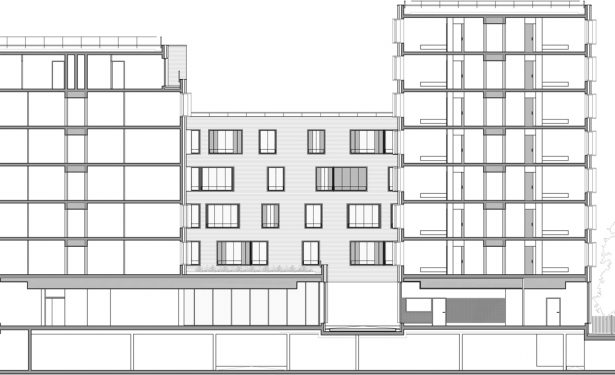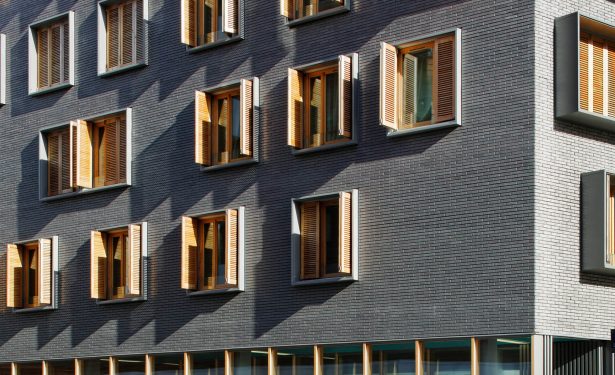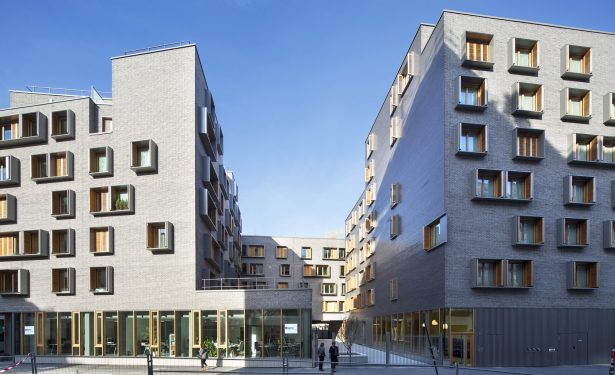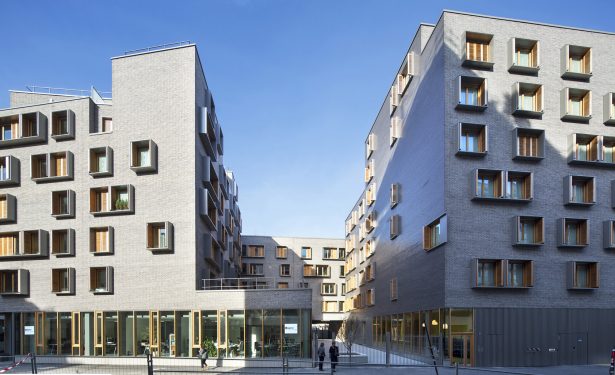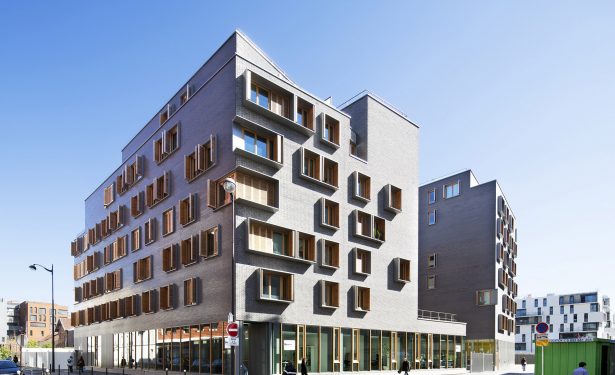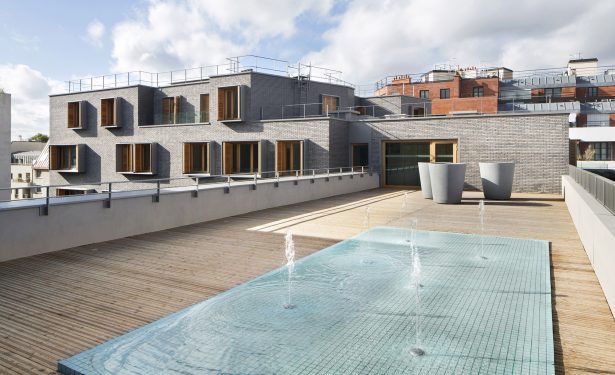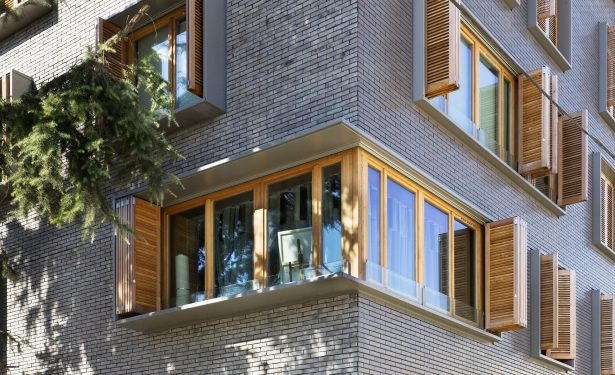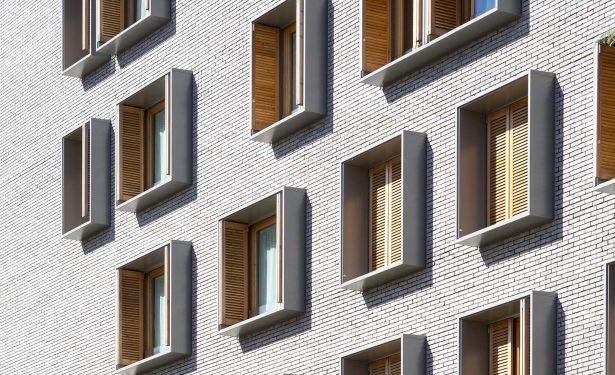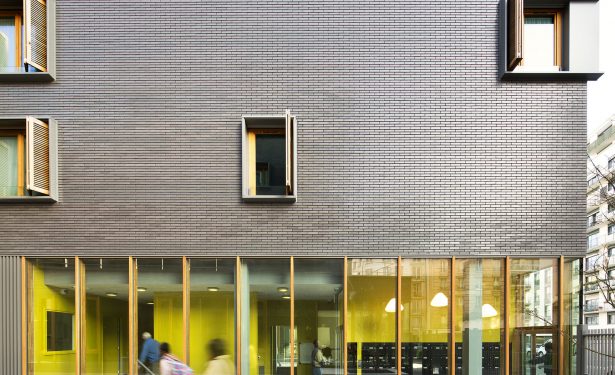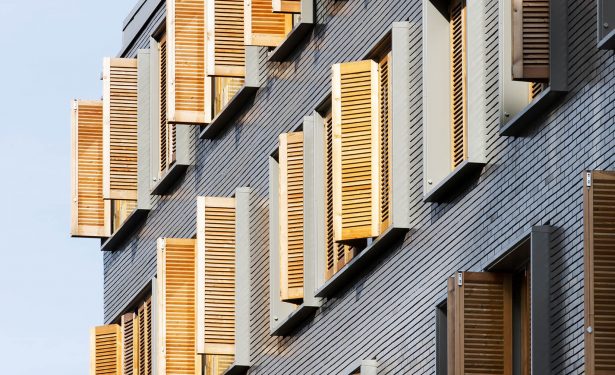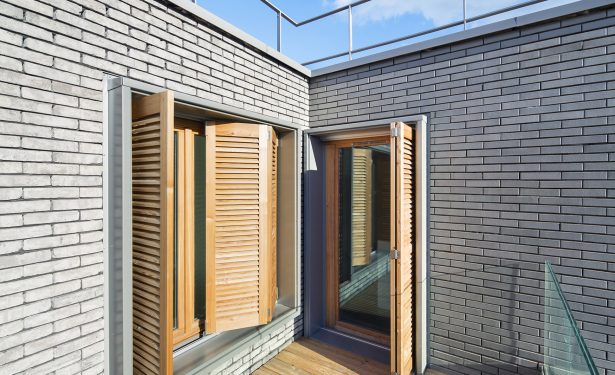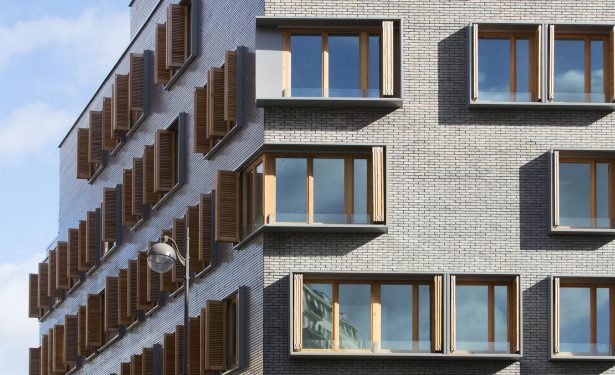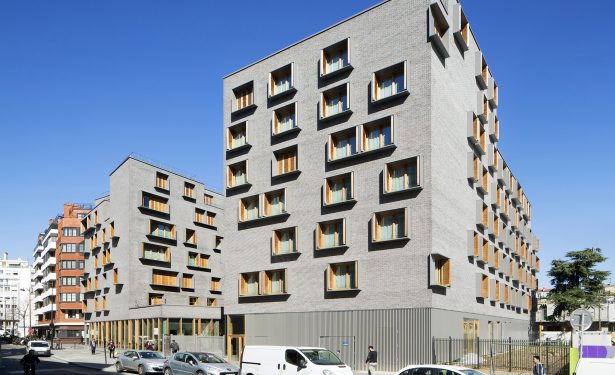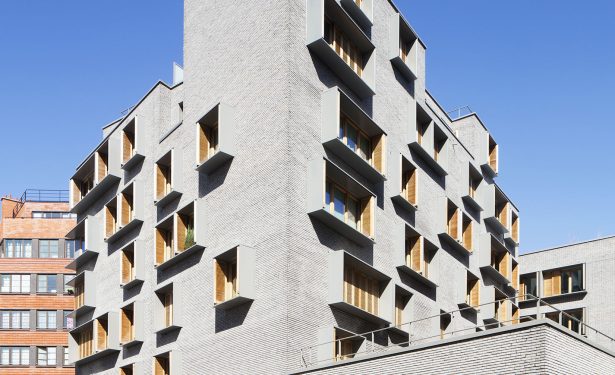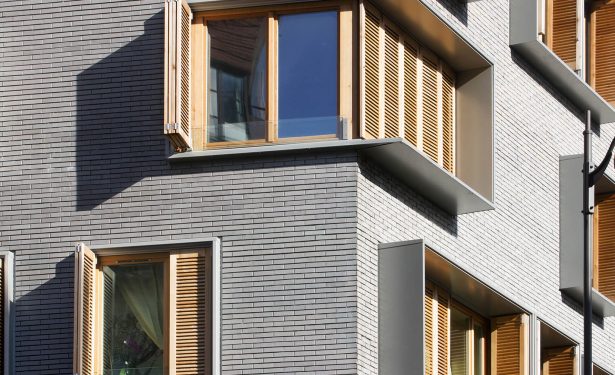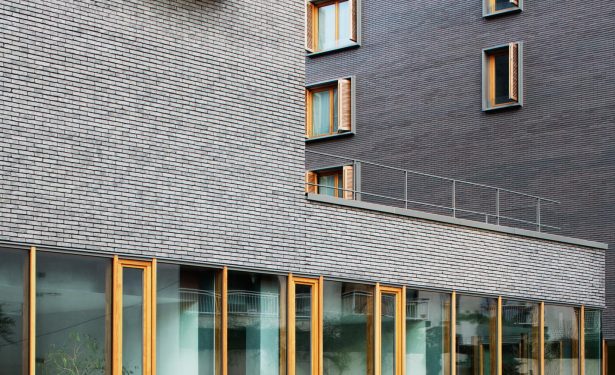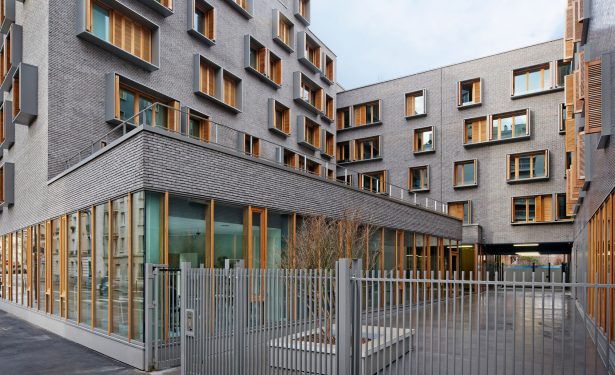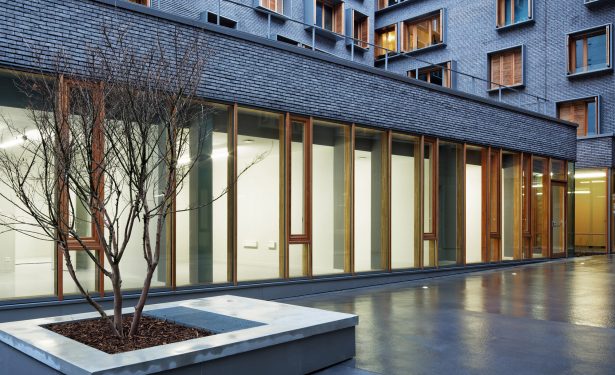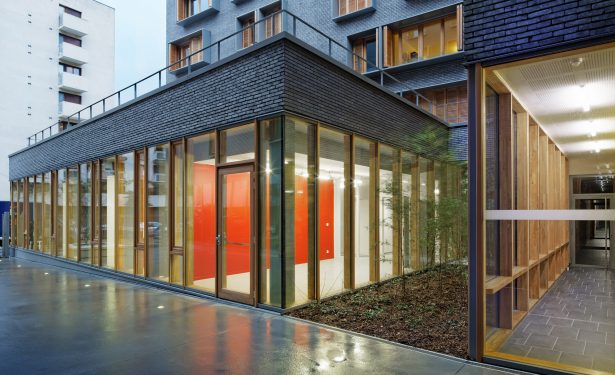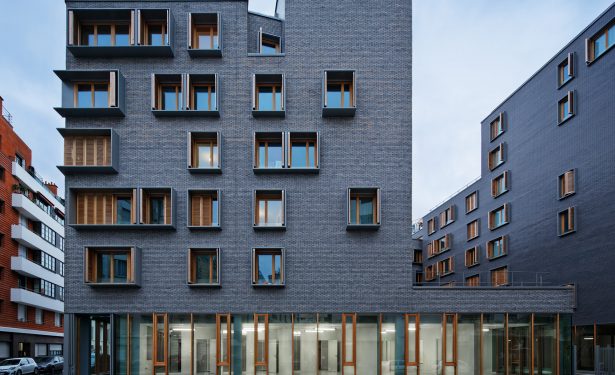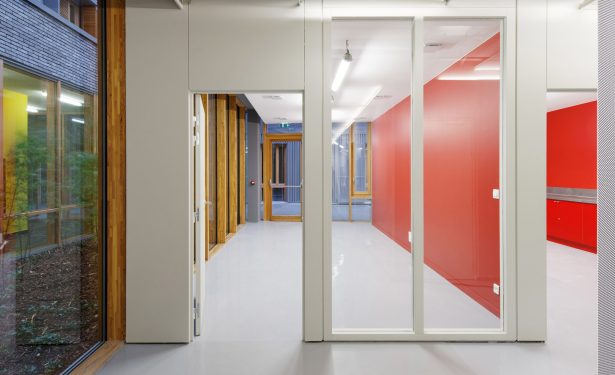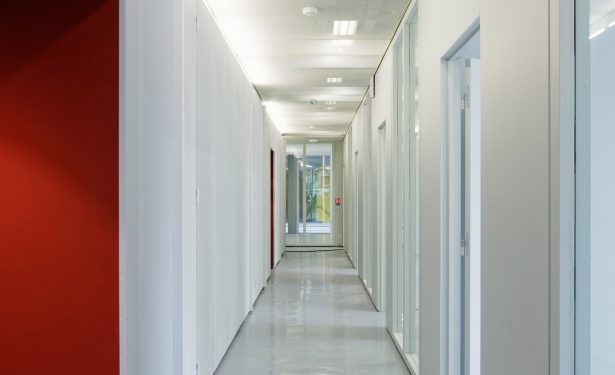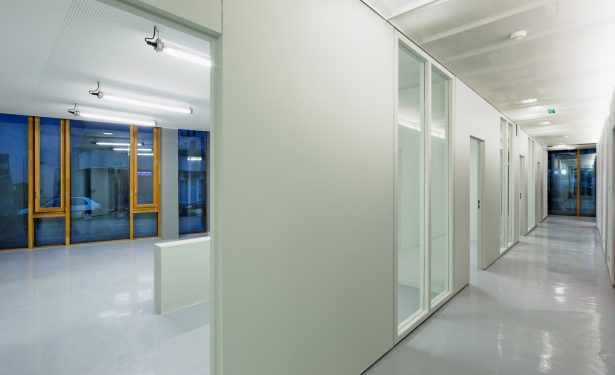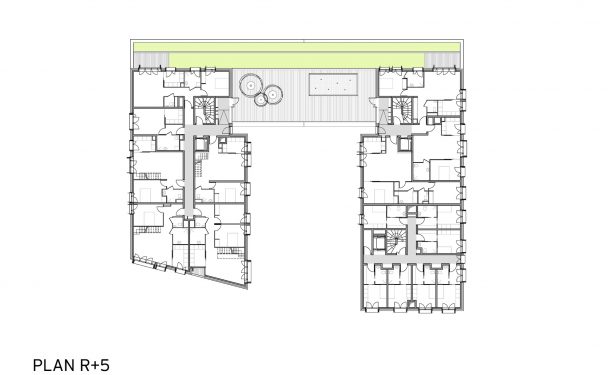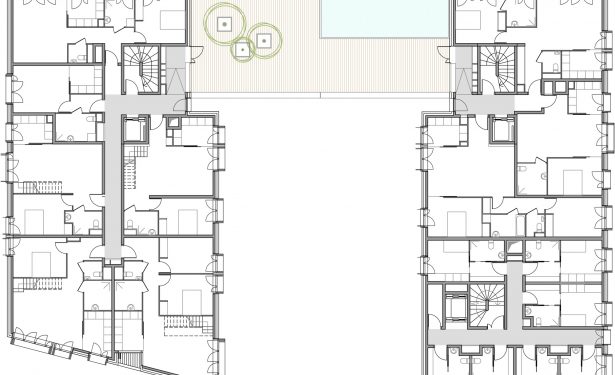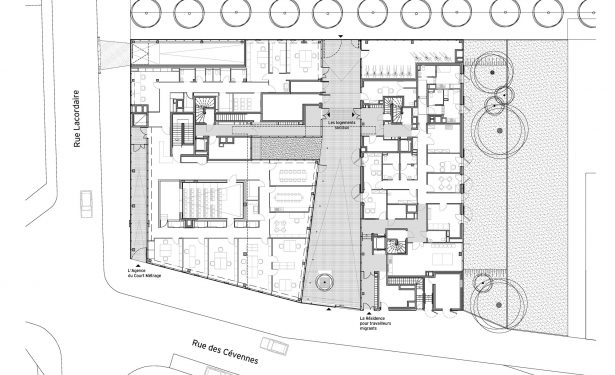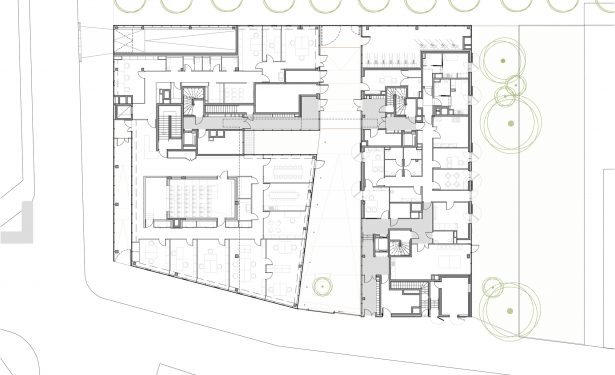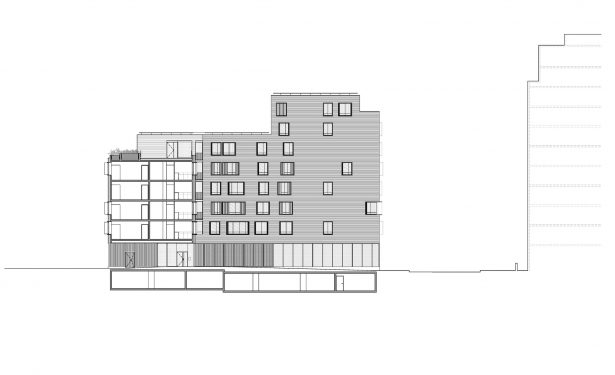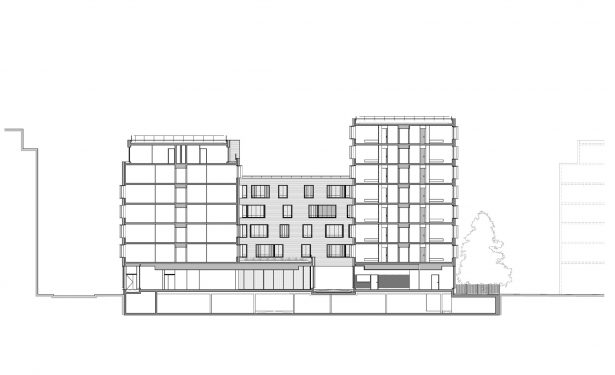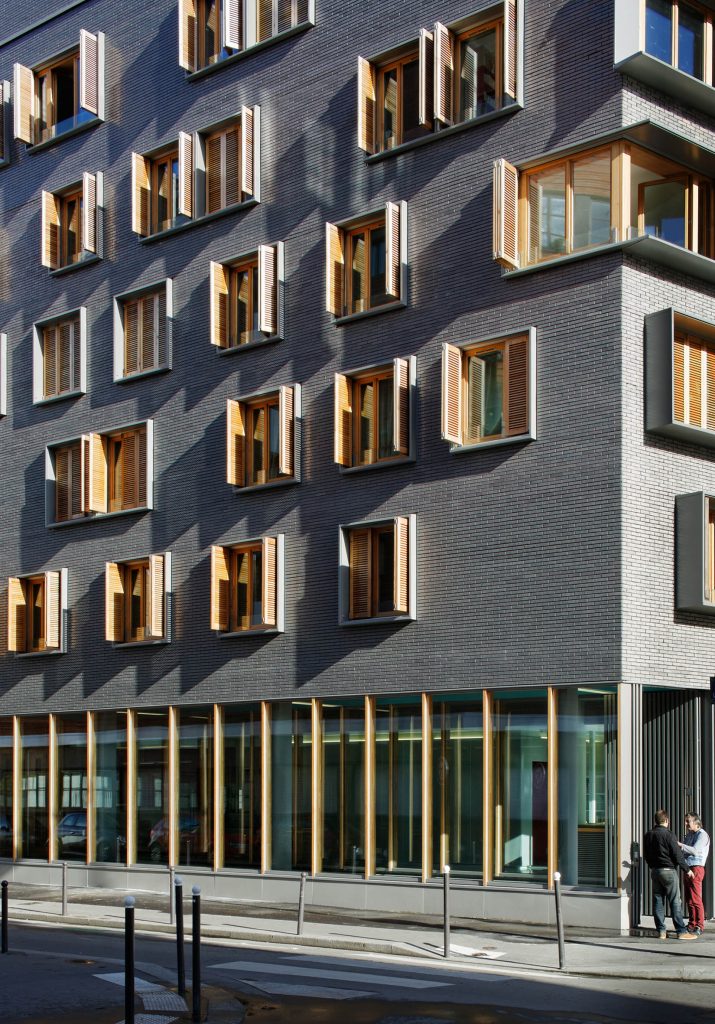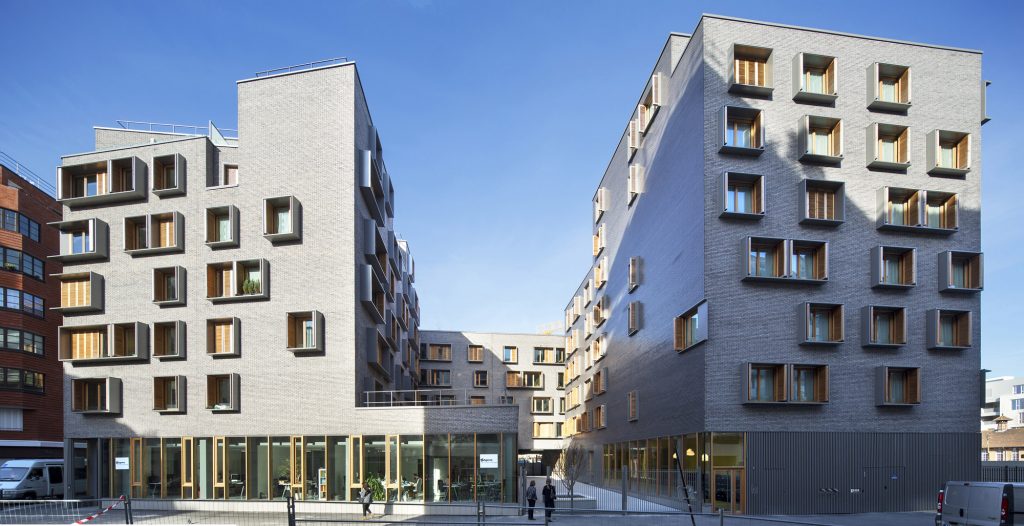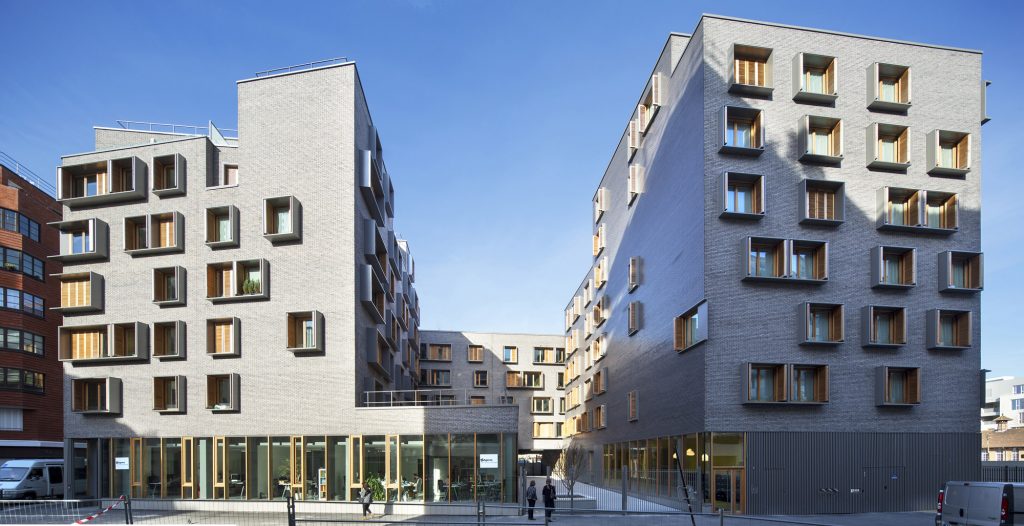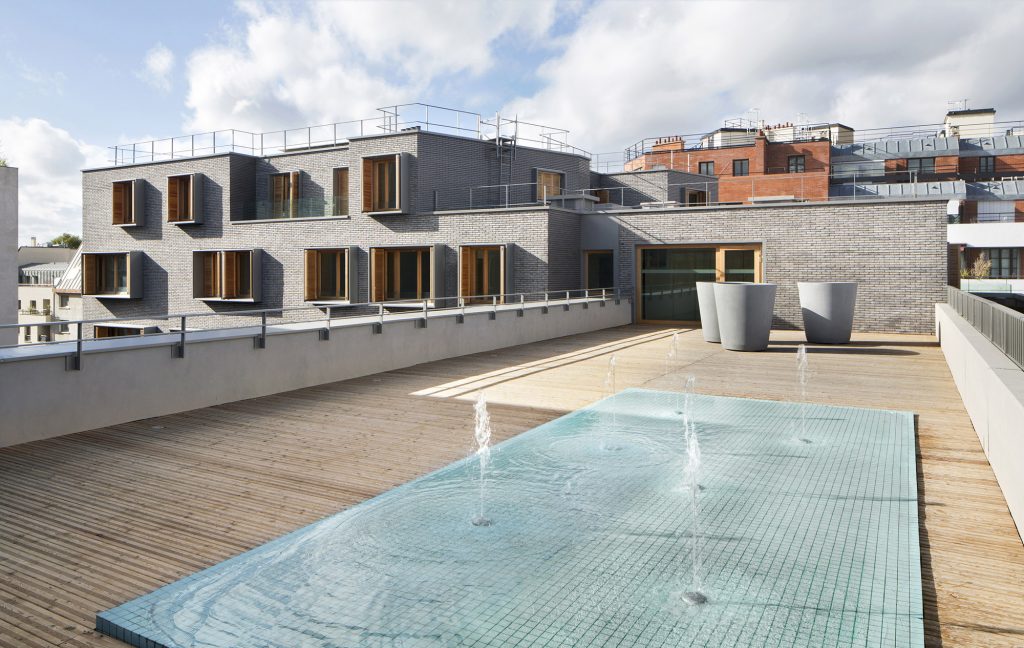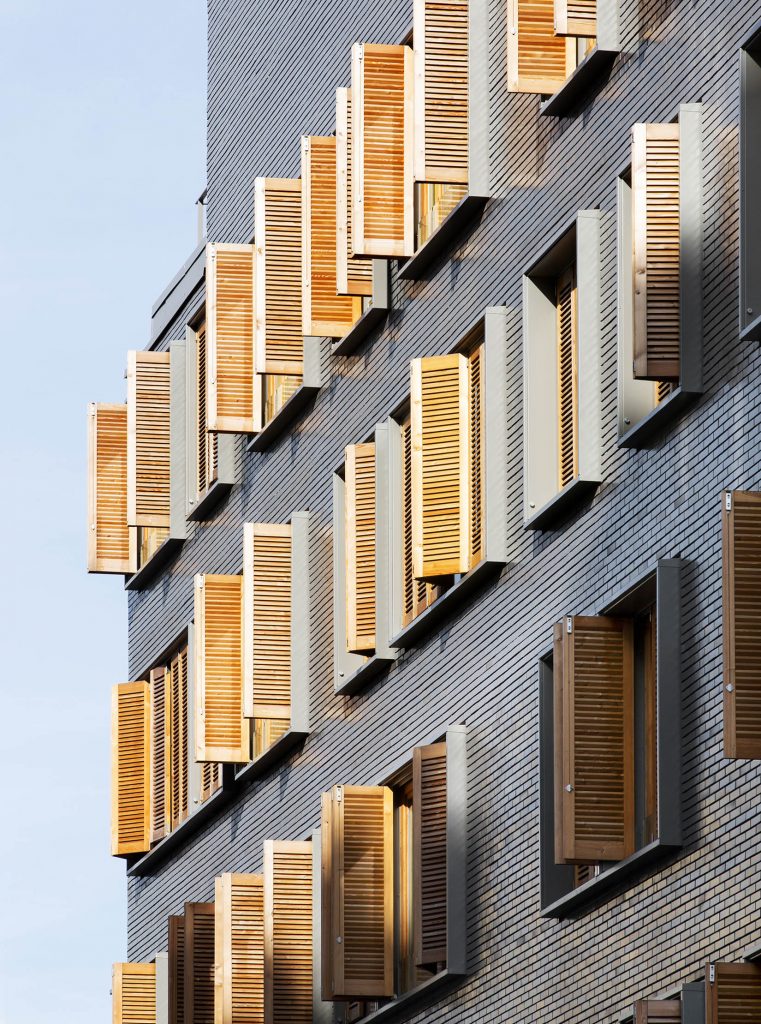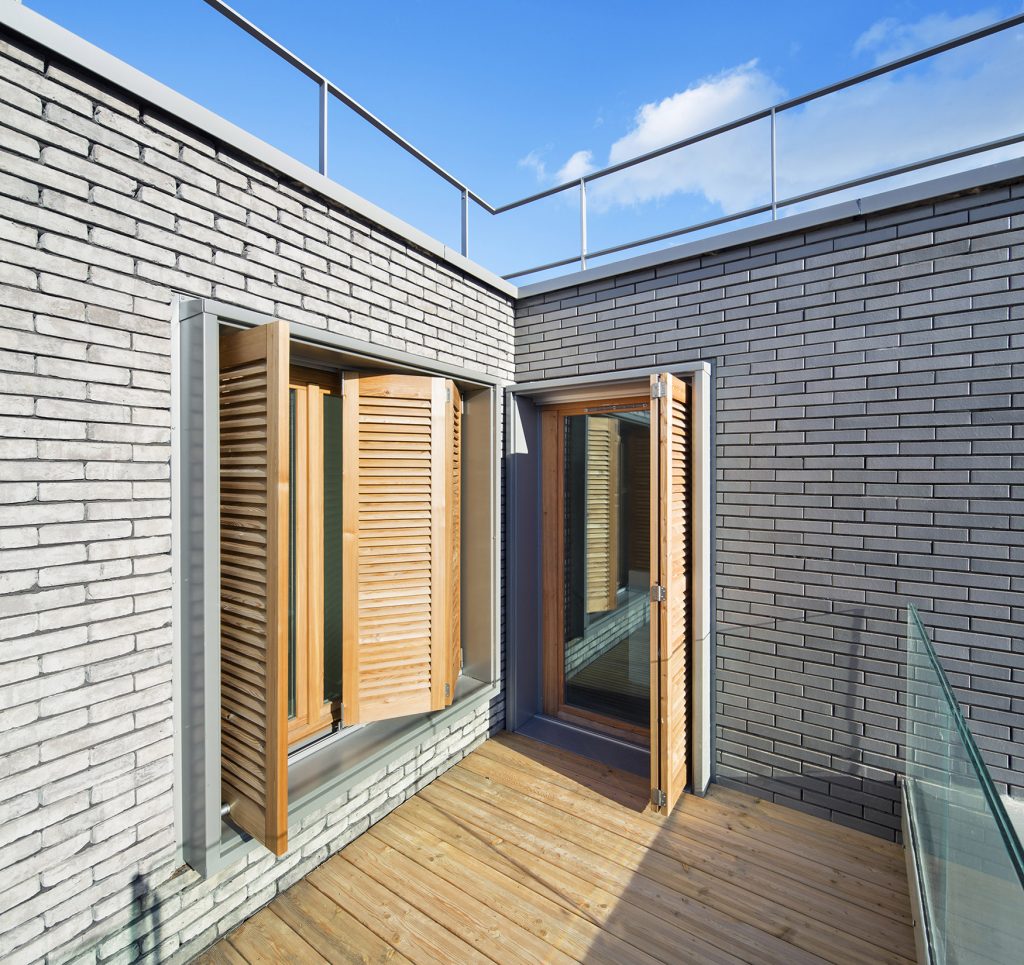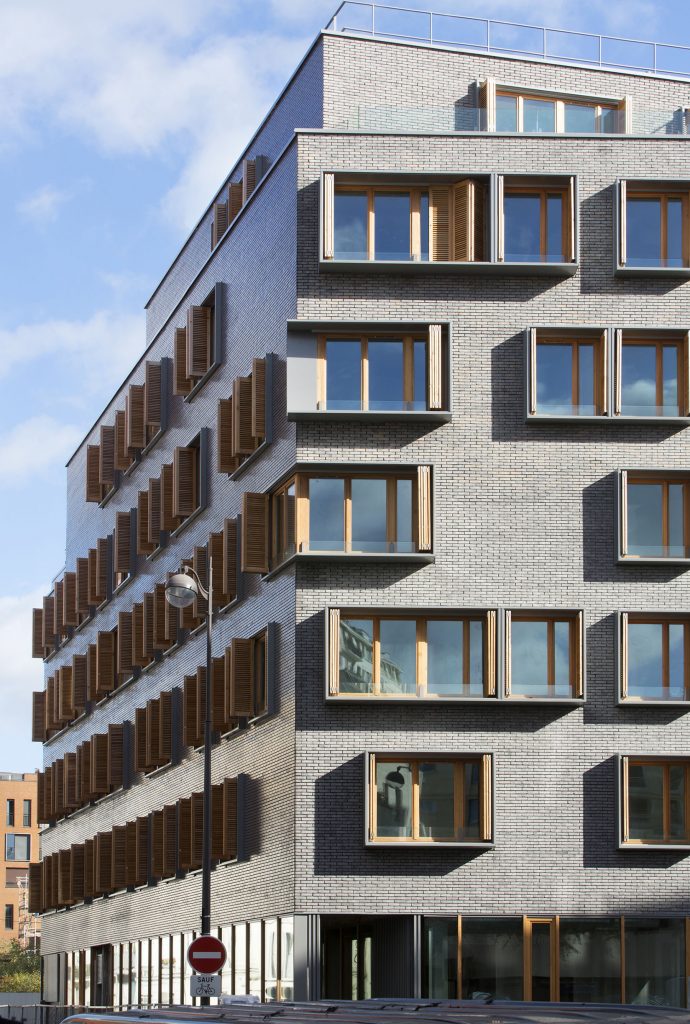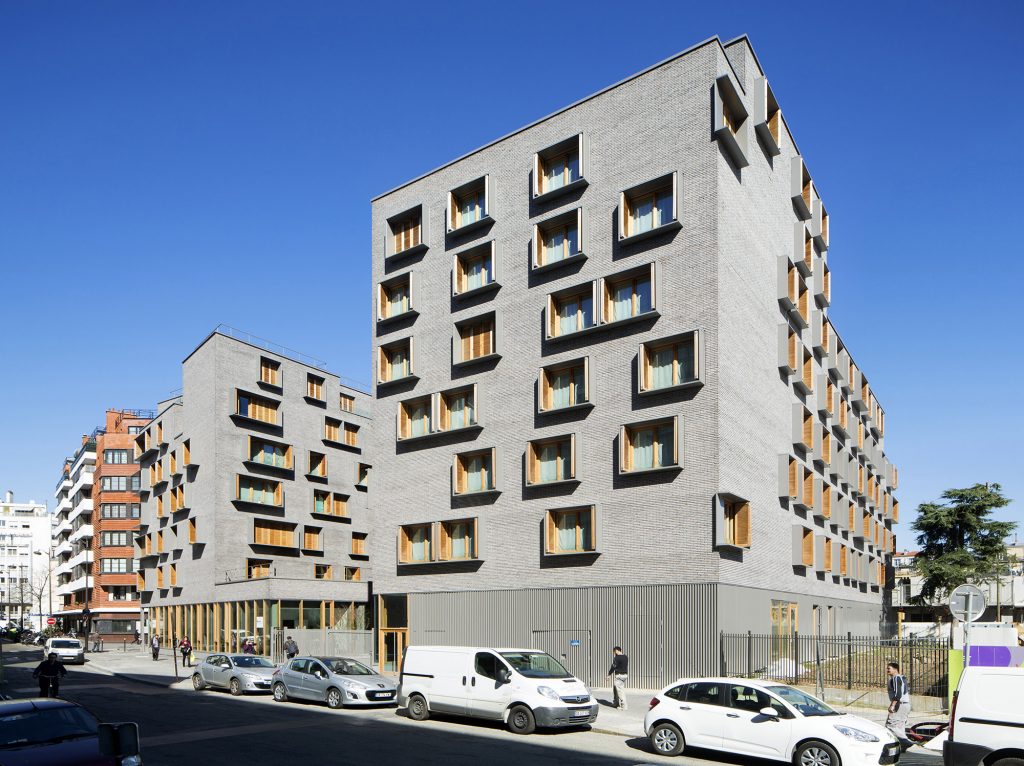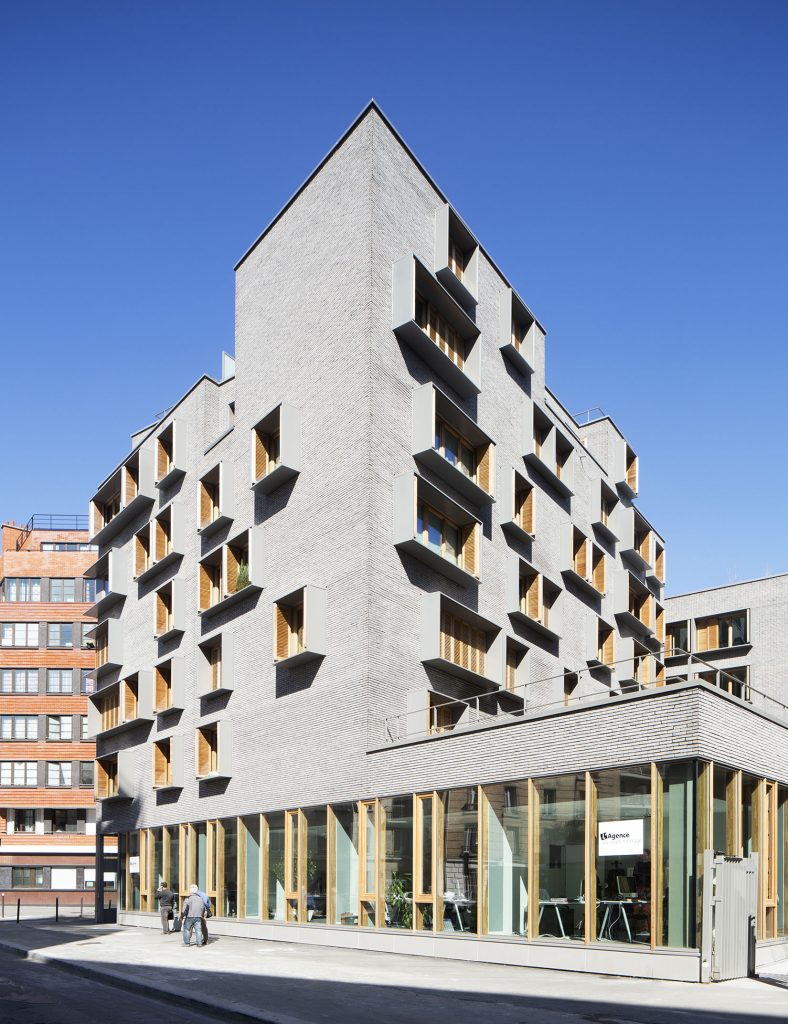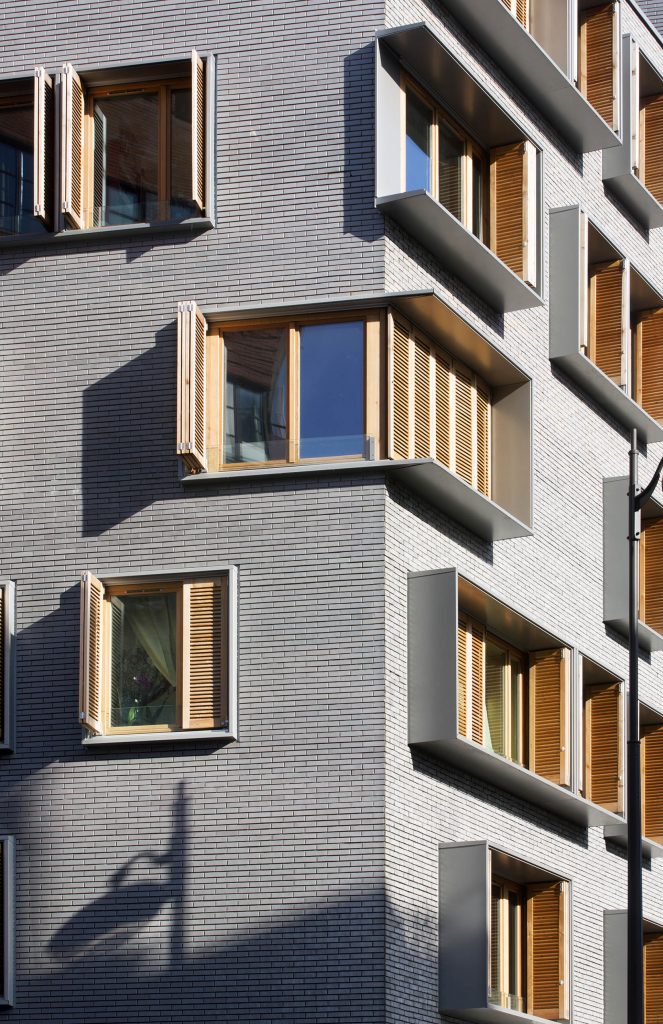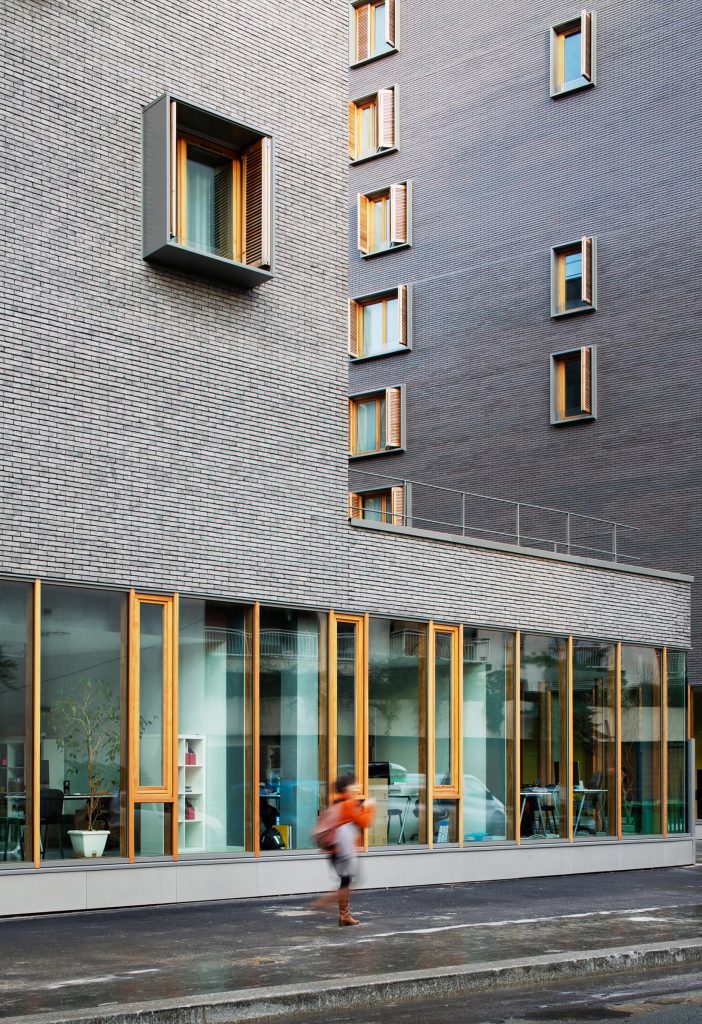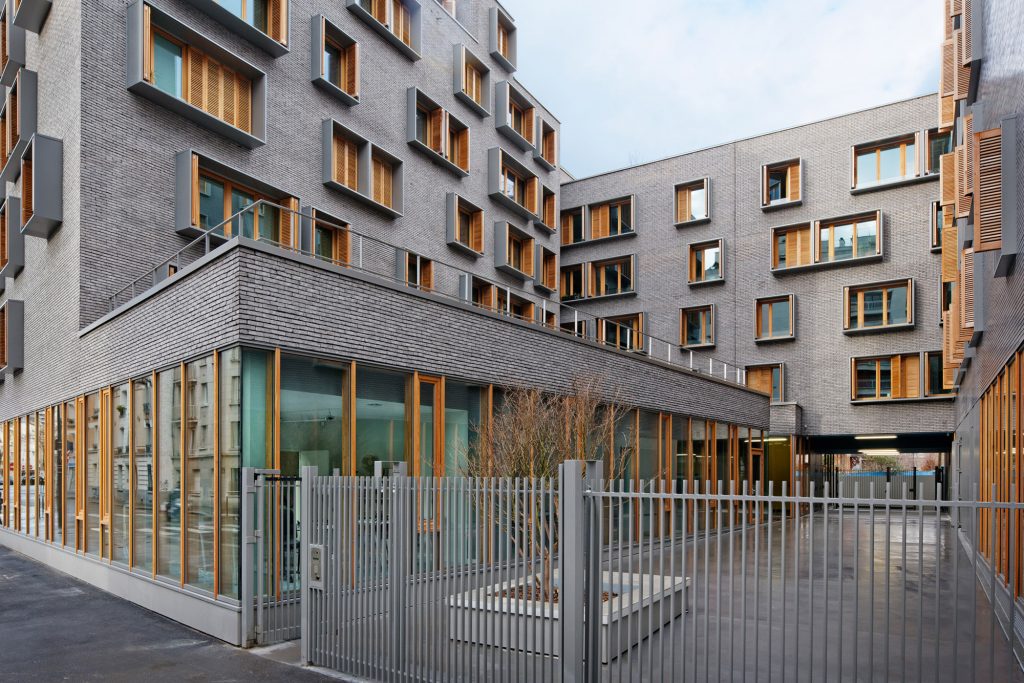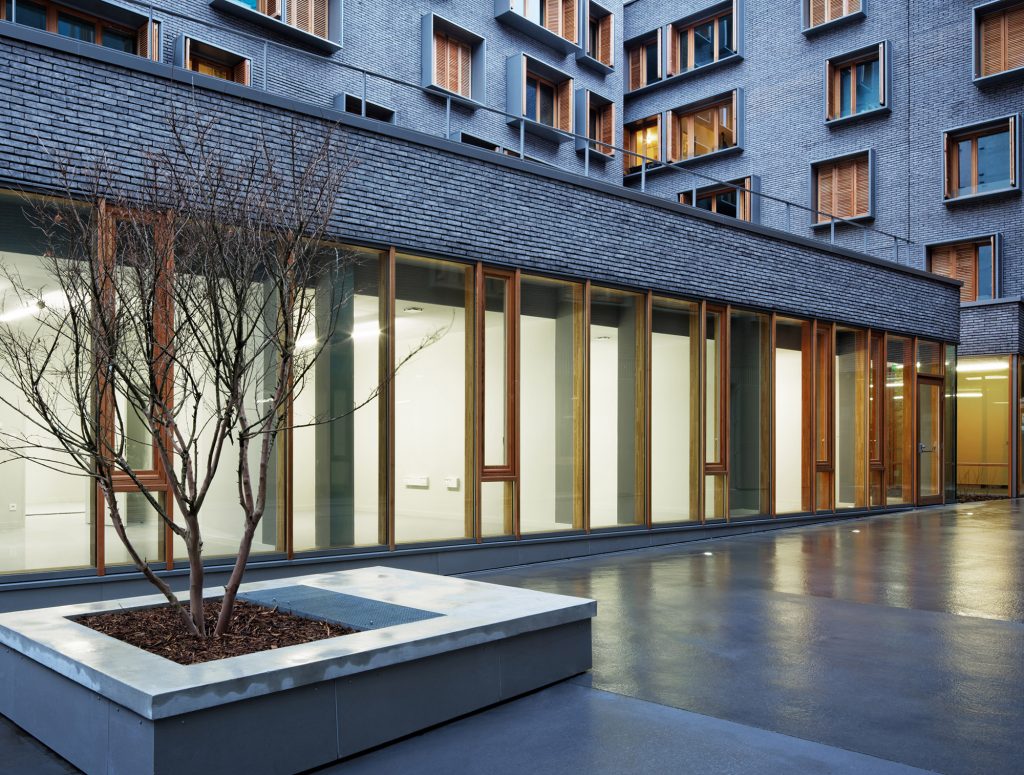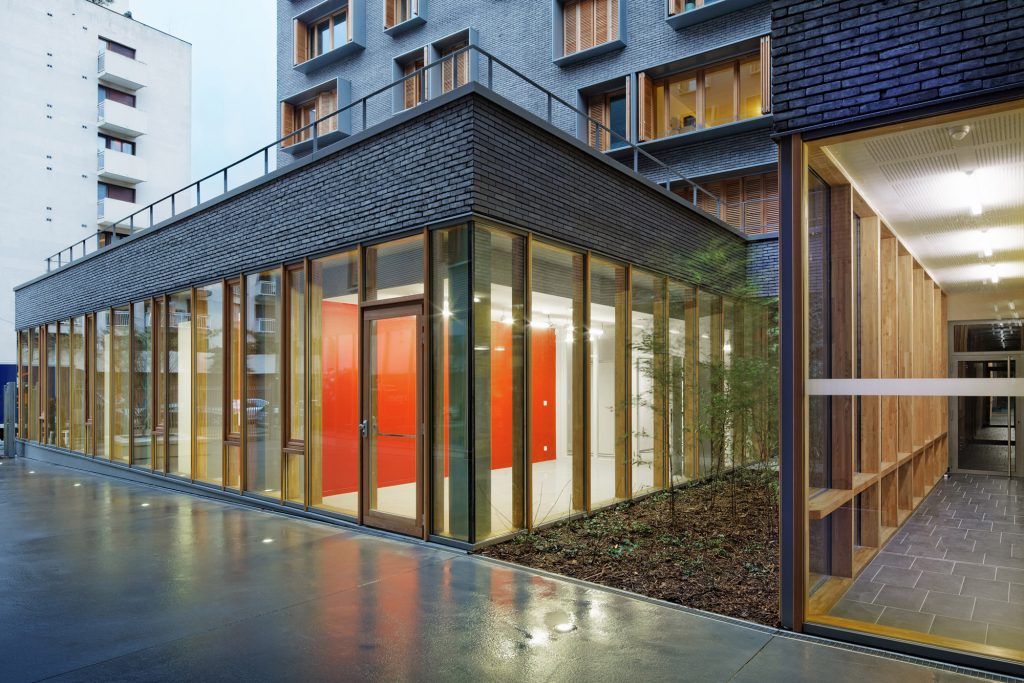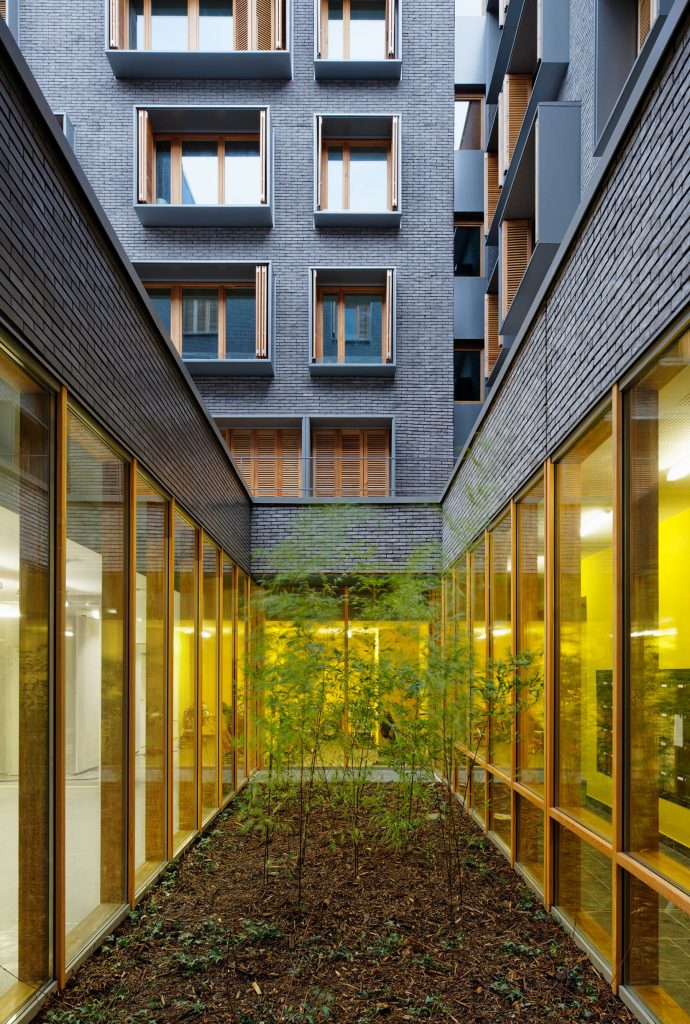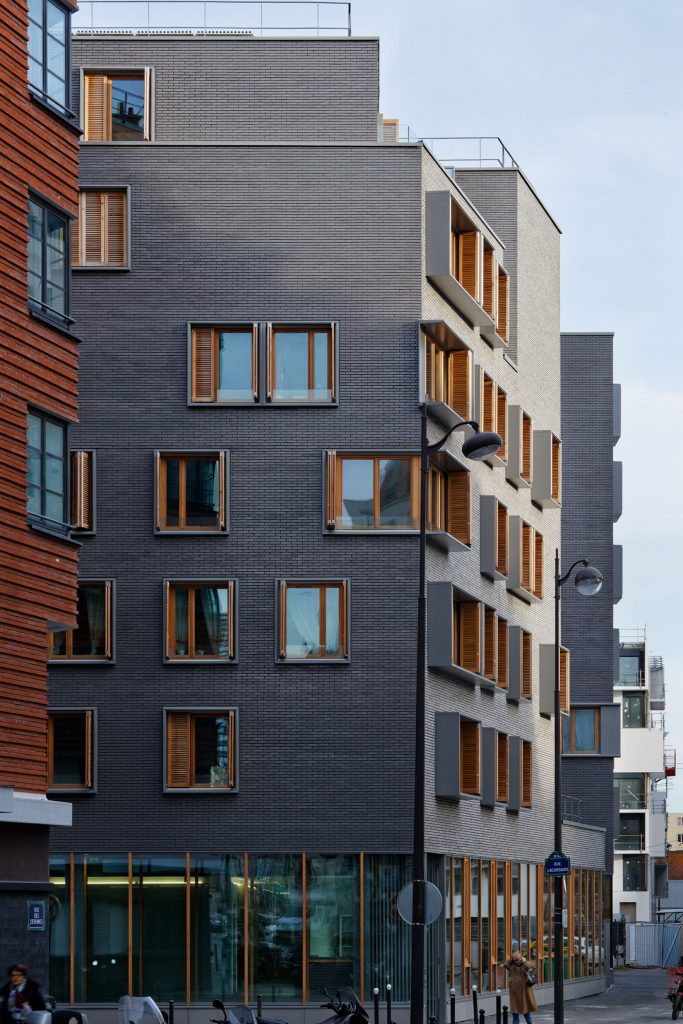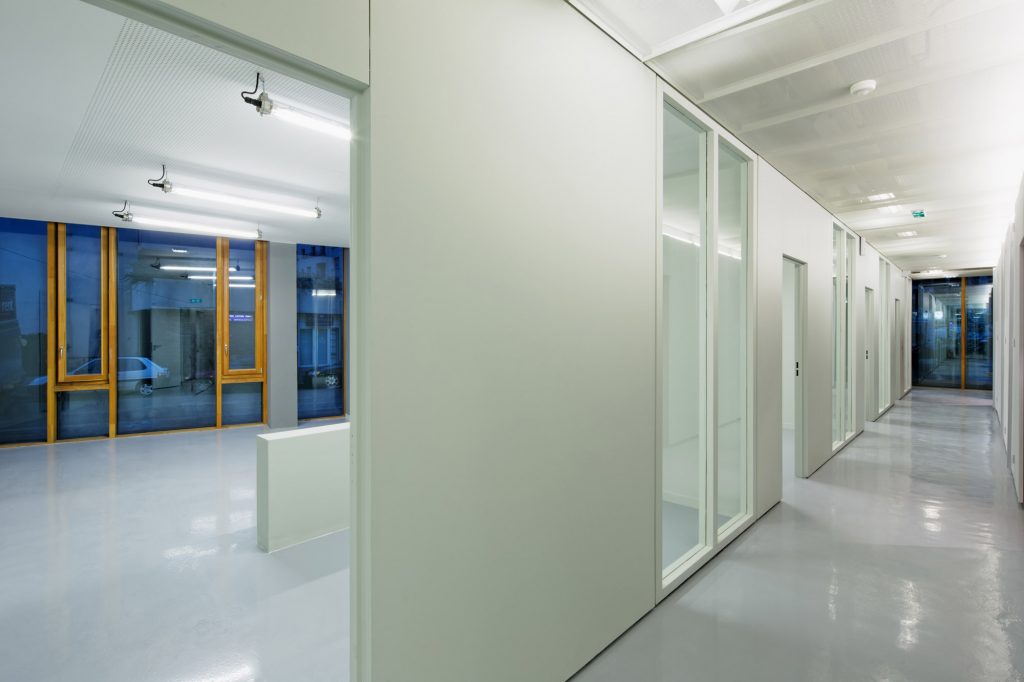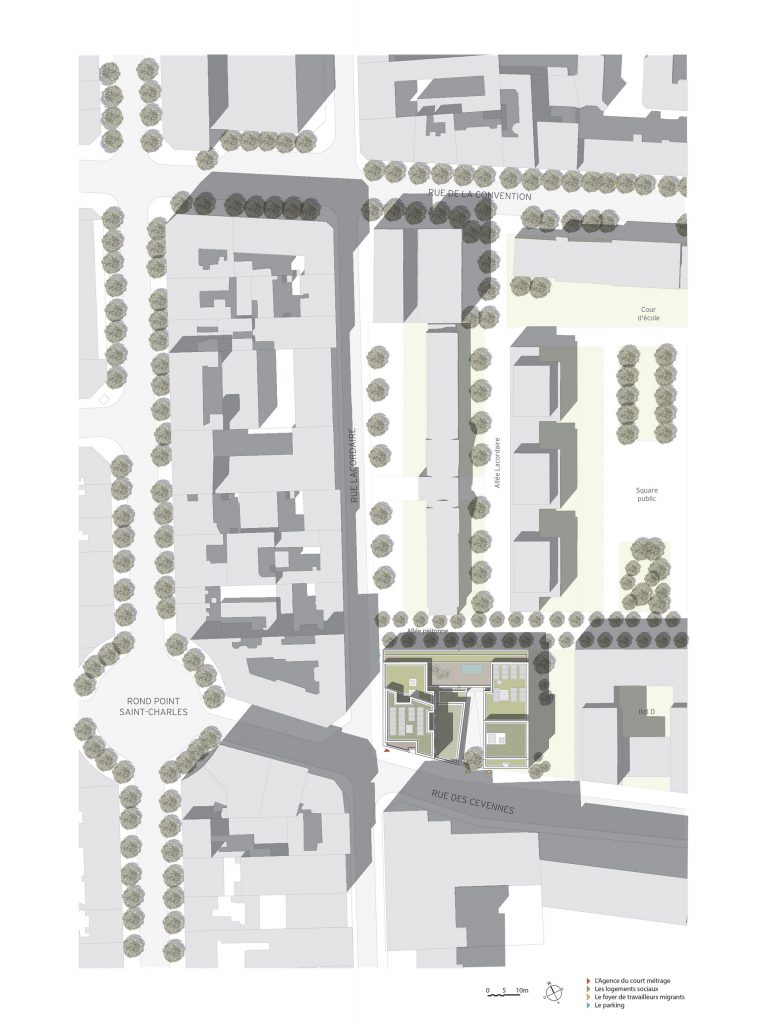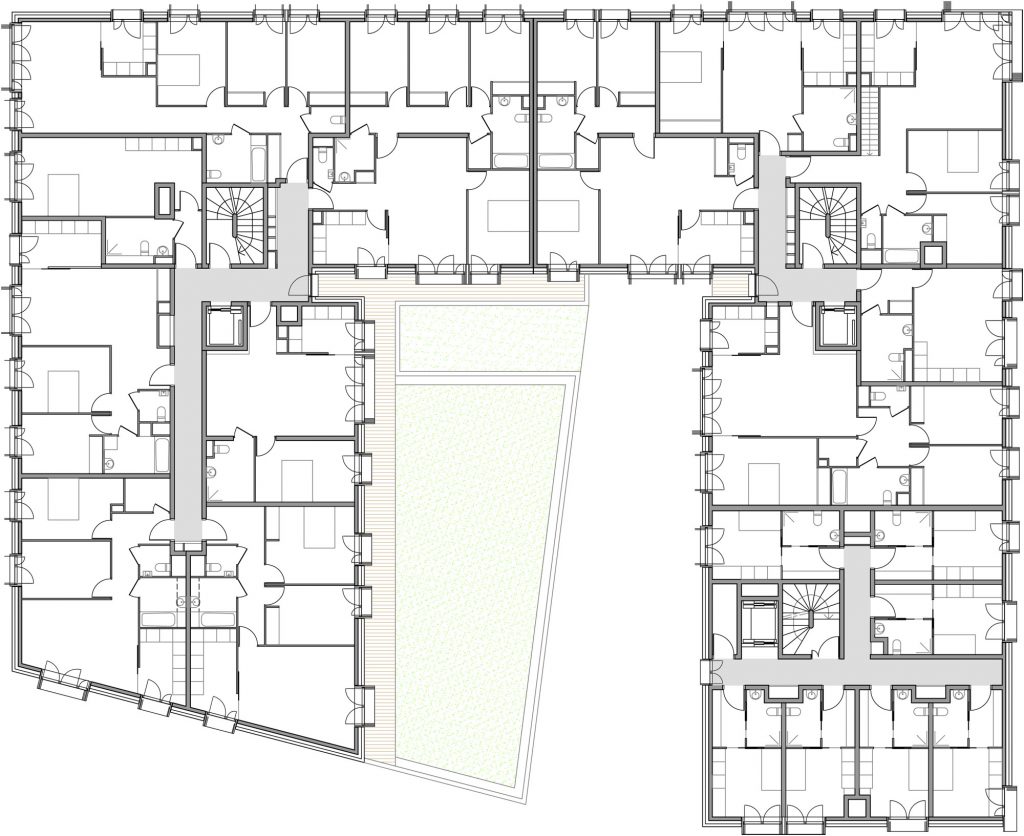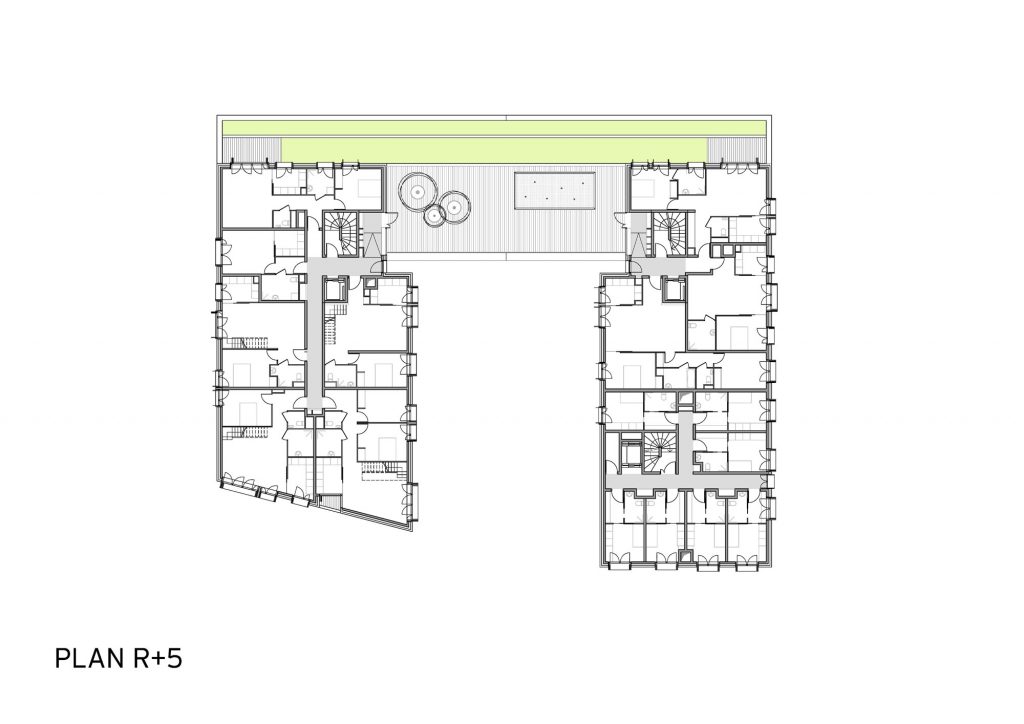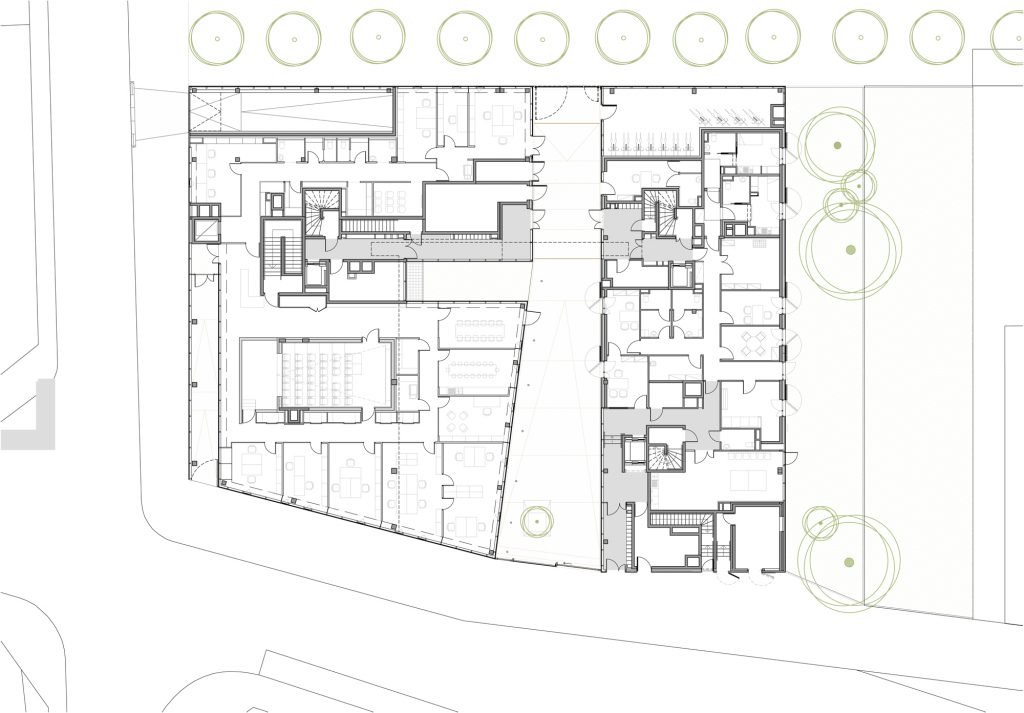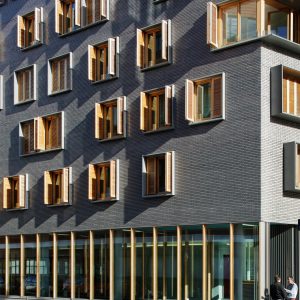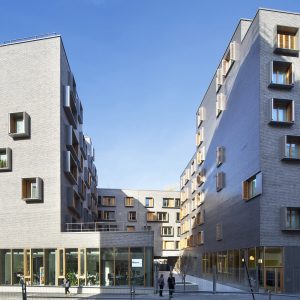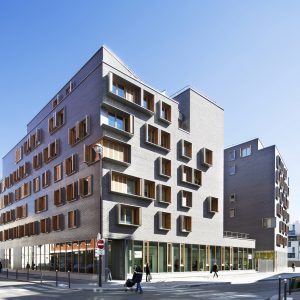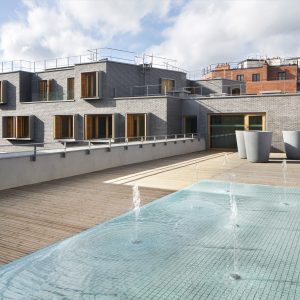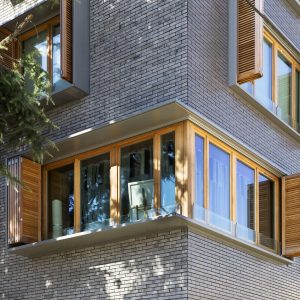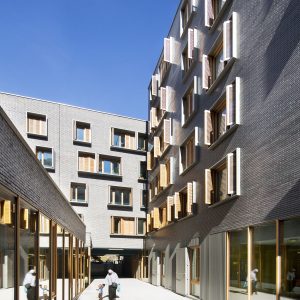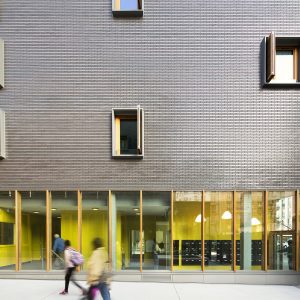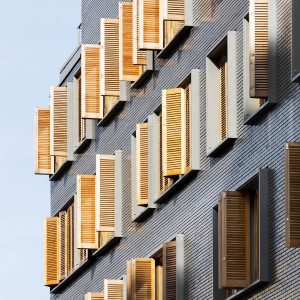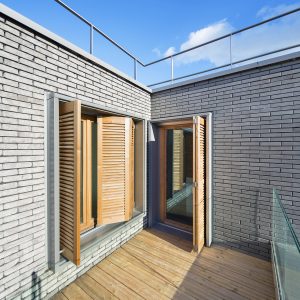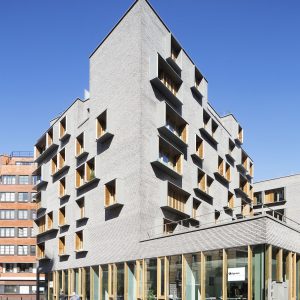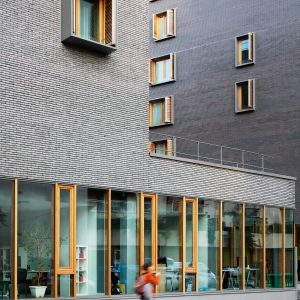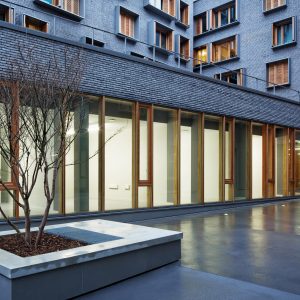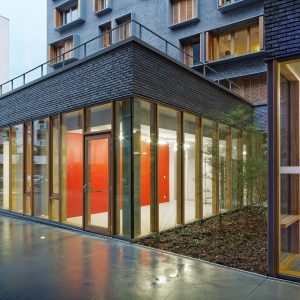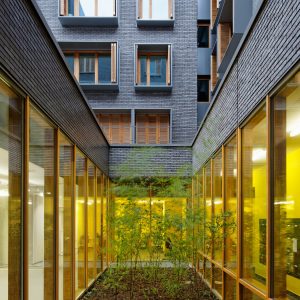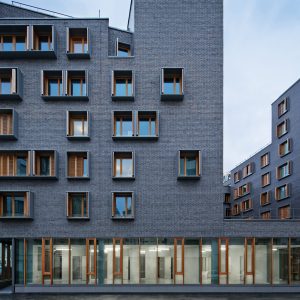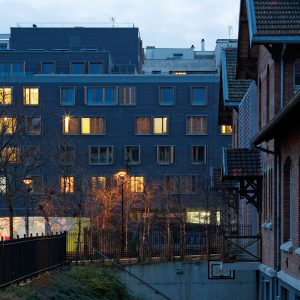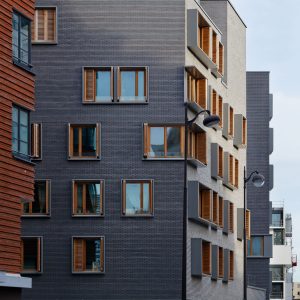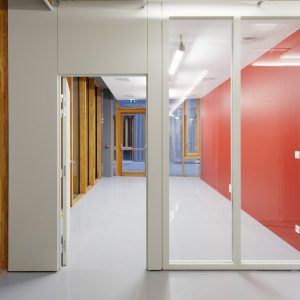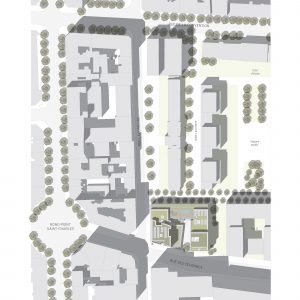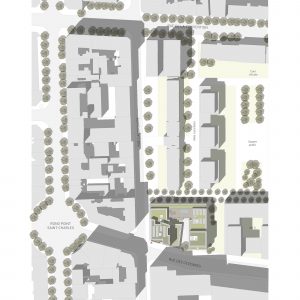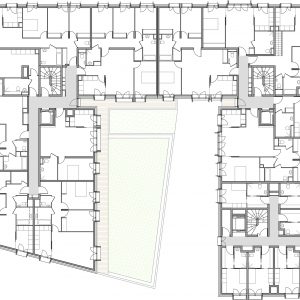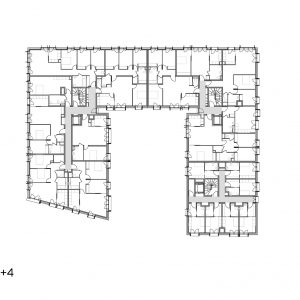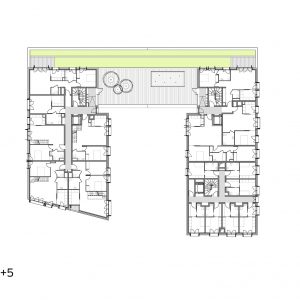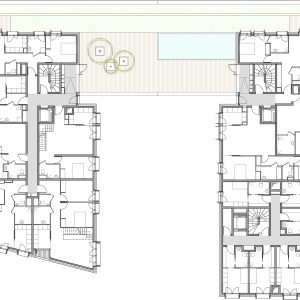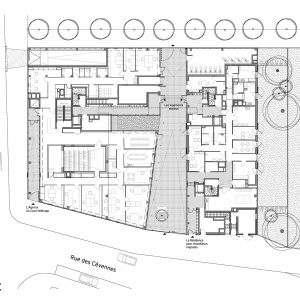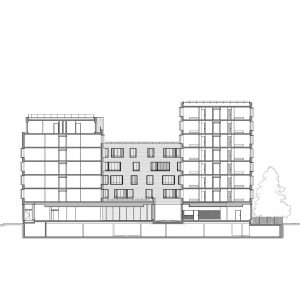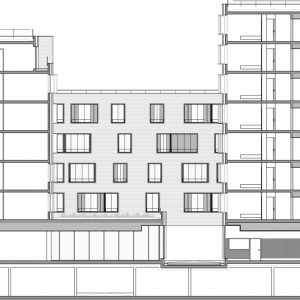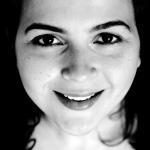- 30 June 2014
- 4265 defa okundu.
ZAC Boucicaut, Lot C
Housing, migrant workers’ hostel and technical spaces.
I – Problems and challenges
The site of the former Hôpital Boucicaut (Boucicaut Hospital) in Paris’s 15th arrondissement is an unusual enclave within a district that is otherwise quite diverse. The Hospital formed a uniform block in terms of use, organisation and architecture. The urban development project proposed by the sector’s town planner Paul Chemetov, maintains this notion of an internal uniformity, in contrast with the immediate surroundings. Very different styles of architecture exist in the district surrounding the sector, mainly dating from the 19th and 20th centuries. By contrast, the urban project proposes a rigorous organisation of blocks arranged together in a series of steady colours (no white concrete and a preference for terracotta) and natural materials, all falling within a sort of historic continuity that preserves the original residential character.
The project clearly belongs to the Boucicaut district, seeking to strengthen its special architectural character. The choice of materials and colours, the rhythm of openings in the facades, the relations the housing maintains with the exterior and the nature of the public spaces, have always been planned with this in mind.
II – General layout
The programme proposed by the Régie Immobilière de la Ville de Paris (RIVP) comprises three very distinct entities. On the ground floor, the Agence du Court Métrage (Short Film Agency), an offshoot of the Centre National de la Cinématographie (CNC – National Film Centre); 49 studio apartments for migrant workers; and 57 units of social housing. The whole represents a space of approximately 6,500 m2. The three programmes are laid out within the “U”-shaped building facing the south side of rue des Cévennes, set on the basement that contains the Agence du Court Métrage. The rue des Cévennes is narrow and lined on its southern pavement by a building of seven floors which screens the sun throughout the day: it places all the facades opposite in the shade for most of the year. The courtyard opened in the middle of the “U” makes the sun and the light penetrate the heart of the building as far as possible.
The appartements for migrant workers have their own independent entrance easily seen from the street; its functioning does not interfere in any way with the other programmes. A passageway runs through the block, linking the rue des Cévennes and the future pedestrian walkway. This passage provides access to the lobbies of the accommodation, which are arranged around two stairwells. The Agence du Court Métrage and its small cinema (42 seats) are located as a seperate unit on the building’s ground floor, with independant access from the corner of rue des Cévennes and rue Lacordaire. Highly visible and identifiable, despite being completely integrated into the whole structure, it functions independently of the rest of the operation.
The whole of the ground floor is raised above street level to protect it from any risk of flooding. The lobbies of the housing are thus approximately 50 cm above the level of the street. The very gentle slope of the pedestrian walkway leading to the foyers (approximately 2%) makes it easy to overcome this change of level.
III – The programmes
The family housing
Access to the social housing is from the pedestrian walkway at the centre of the unit. This is a private passage, with gates at either end controlling access. The rising slope from rue des Cévennes leads gently towards the two lobbies, laid out opposite one to each other. On the upper floors, the layout is compact and rational. The apartments are arranged around the two stairwells: one provides access to 34 apartments, the other 23, for a total of 57 apartments on six floors. The great majority of these apartments face different directions (double orientation on facades opposite, corner apartments, overlooking patios). Each floor offers a wide variety of apartments to encourage a social and inter-generational mix (large and small families). The apartments are generally single-storey, except four five-room apartments arranged as duplex, which also benefit from a private terrace on the upper floor of the apartment. The landings on each floor all benefit from
natural lighting.
There are only six apartments with a private terrace. The others have access to the terrace on the fifth floor laid out as a hanging garden. This terrace can be easily reached by all the tenants and is directly served by the two lifts in the two stairwells. The garden offers a sunny and planted green area, in which tenants can relax and socialise. The Eiffel Tower can be seen from the garden which offers a place where the pleasure of living together, in Paris, becomes real. A broad “beach” in wood faces the sun and offers a place in which to set out deck chairs and parasols. Small trees in pots are also planned. A fountain provides a refreshing sight on the terrace, where children can play with water.
All the rooms are fitted with large windows highlighting the link between indoors and outdoors. These windows include a broad wood and metal frame. The balustrade is 70 cm high instead of the usual 100 cm, thanks to an additional small glass balustrade. All the windows are fitted with wooden sliding and folding shutters which serve to block out the sun or close off the window. These shutters are made of natural larch from European sources. The external frame is aluminium, painted the same colour as the facade, which is a greyishbrown terracotta tone. The windows are extra-large in the living rooms highlighting the comfort and pleasure of being at home.
The building appears as a block cut in a uniform manner, criss-crossed in every direction by the window-frames. However, in order to satisfy the architect/urban planner’s desire to differentiate the facades according to the direction they face, the surface of the walls is smoother, darker and glossy on walls facing north-east and north-west, and rough, light and matt on walls facing south-east and south-west, which are turned towards the sun. The position of the window in its thick frame, together with the presence and position of the sunshading shutters also make it possible to differentiate the facades. On the corner of rue Lacordaire and rue des Cévennes, the stack of very large corner windows and a special treatment of the skyline in the upper volume creates a special architectural feature which, emphasises this corner.
The hostel for migrant workers:
The hostel for migrant workers is compact and rational, technically simple and economical. It consists of a vertical building of seven floors, completely independent of the rest of the structure. Each floor has seven studios, comprising a series of small spaces encouraging a calm cohabitation between tenants.
Each studio has a large window of the sort used for the social housing: thick frame, low ledge, external sun-shading shutters. There is thus no appreciable difference in the architectural treatment of this unit, which will thus avoid any risk of stigmatisation despite a general layout that clearly separates the two programmes.
The community spaces on the ground floor are located beneath the lodgings along the garden, which is for the exclusive use of the hostel; it includes the existing fine cedar that has been preserved.
